
views
Each recipe serves 4 people.
Oatmeal Porridge

Place the oats and water in a large pan over medium heat. Using water is easiest as milk can easily scorch on the bottom, ruining your porridge and smelling up the kitchen. You can, however, add milk towards the end if you’re concerned about your porridge not being creamy enough. Rolled oats are best as they’re whole, natural, and haven’t been through much processing. However, steel-cut or quick oats are okay, too – they just might not have the exact taste you're going for.
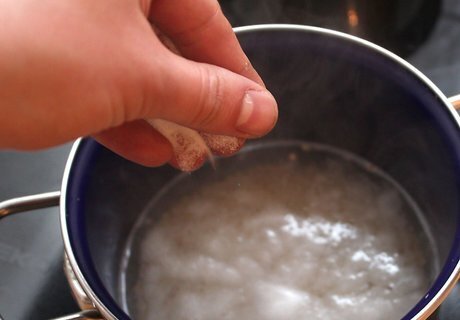
Add a pinch of salt and stir. Use a wooden spoon to stir – some people even use the top of the spoon like they’re stirring their porridge with a pencil. Keep stirring until it starts to bubble. Never use metal on a non-stick pan. The metal can scrape away the sides, resulting in microscopic bits of the pan getting into your food. Always use a wooden spoon or a rubber spatula.
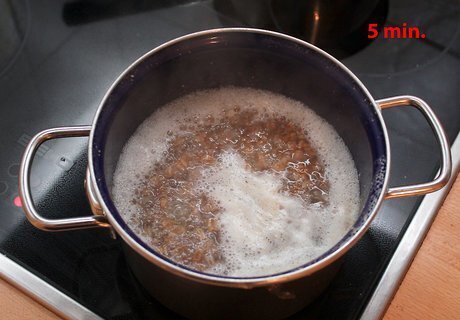
Bring to a steady simmer for 5 or so minutes. Once it reaches that bubbling point, bring the heat down to low (this is especially important if you’re using milk to prevent it from scorching). Stir as often as you can to get it to a smooth and creamy consistency. If you like runny porridge, add a splash of more milk or water until it looks like you pictured it. If you’re making for a group, let each person add more liquid as they see fit to their individual serving once it's all in bowls.
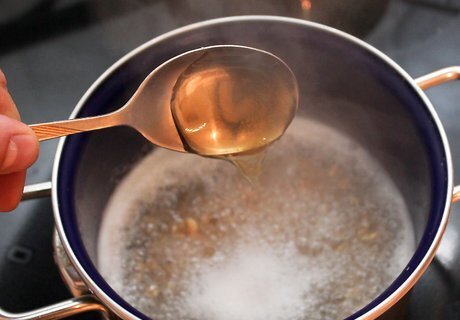
Add in a dash of brown sugar and honey, if you’d like. Most people like to start out with a sweet base to work with. Some people even add butter! As your porridge is finishing, consider adding a few touches to everyone’s dish. Just a tablespoon or so of each ought to do it. If you're trying to watch your sugar intake or prefer a more savory dish, skip this part. You can always add in whatever you like, later, too.
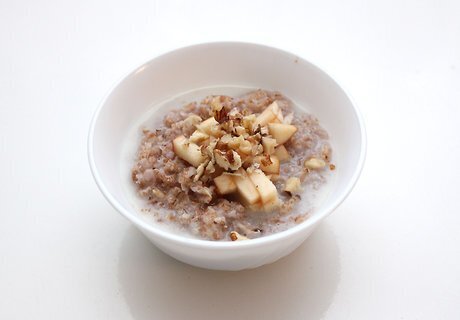
Flavor with toppings and serve. There are dozens of ways to spruce up a plain ol' dish of porridge so breakfast can be easy but still delectable. Here are some ideas: Drizzle with honey and Greek yogurt Add blackberries and raspberries, stewed to bring out their juices Slice up a banana or two and add some maple syrup Add in a tablespoon or two of cocoa and peanut butter
Rice Porridge (Congee)
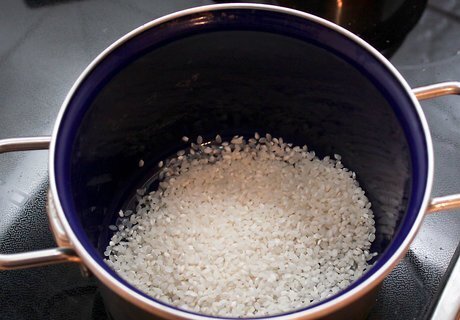
Place leftover cooked rice into a large pot. This recipe can also be made with uncooked rice, though it takes much longer. Just make sure there’s enough room in the pot for plenty of water, too. You can also make this dish with a rice cooker or in the microwave. With those, times may vary. Essentially, congee is just cooked rice with much more water, allowed to stew.
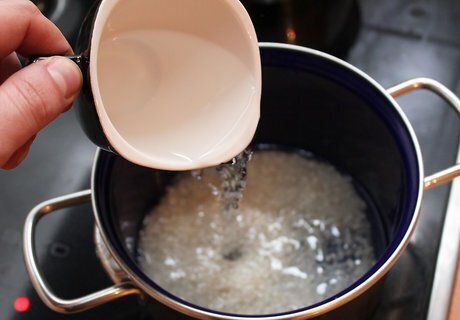
Cover with water or broth by about one inch. As most rice porridge is used to get rid of leftover rice, measurements are not a standard of this timeless recipe. However, with cooked rice, you want about twice as much water – enough to cover the rice and then about an inch more. If the rice is uncooked, you’ll need about 4 times as much water. The rice expands and absorbs the water while cooking. Broth is good if you're looking for a richer, more savory taste, but it's hardly necessary.
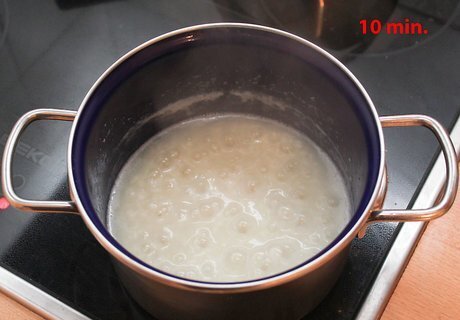
Bring it to a boil and then simmer for 10 minutes. Keep stirring to nudge the grains apart and to give it a smooth consistency from the get-go. Once it reaches a boil, bring the heat down to low and let simmer. Cover your pot, resisting the urge to check it more than once or twice. The more you open it, the more the steam and heat escapes, slowing the process.
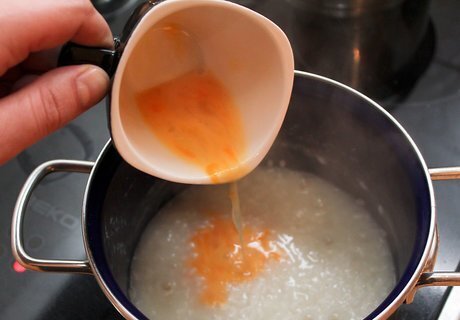
Add the eggs. Be sure to break up the eggs with a fork or you might end up with bits of yolk floating around in your porridge. In traditional rice porridge, the eggs are blended right into the porridge, giving it flavor instead of texture. Congee, or rice porridge, isn't about rice porridge with bits of scrambled egg floating about. To be sure it'll turn out smooth, whisk up the eggs beforehand and then add to your porridge.
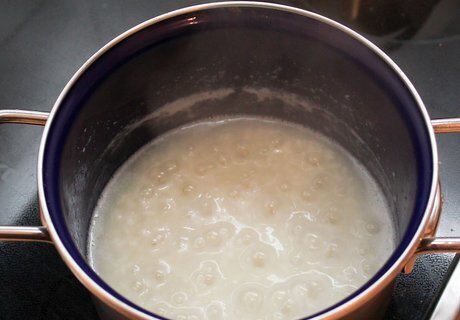
Keep stirring until the porridge is gelatinous and smooth. As the broth or water breaks down the rice, slowly it will start to congeal and become one mass. The grains will smooth out and the water will seem the thicken. If you see this, you're on the right track! Be sure to keep stirring – it's best that it's all cooked evenly and nothing is left to harden on the bottom of the pan.
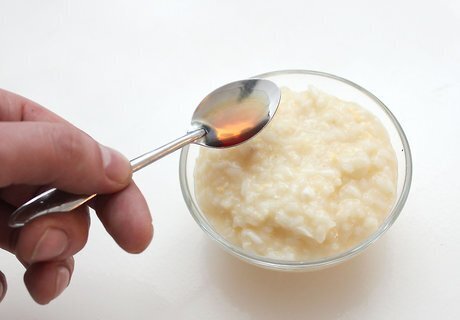
Add soy sauce or other condiments, if you’d like. Soy sauce is a very common addition to congee, and some people like to add a little kick with chili sauce or Sriracha.
Barley Porridge
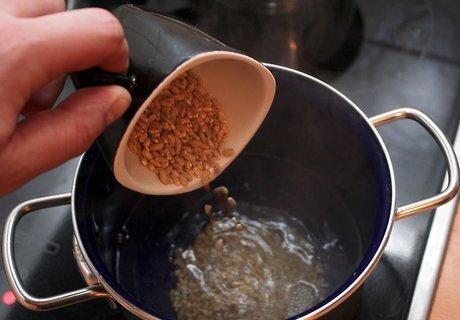
Combine 2 cups barley with 6 cups water and 1 teaspoon salt. Bring these ingredients to a boil in a large pan over medium heat. Once they reach a boil, bring down the heat to low. Keeping the temperature up too high will result in the barley burning and the water evaporating too quickly. If you don't have 4 people to serve, this recipe is easily cut in half. However, don't necessarily modify the toppings too much – if you like it sweet, you may need just as much sugar!

Simmer until the barley is tender, about 45-60 minutes. Barley is a tough nut to crack (figuratively, of course. Literally barley is a grain with just a nutty flavor). Because of it's tougher consistency, it takes longer than oats or rice to make tender. Stir every 10 minutes or so, checking on how it's doing. Every pot will differ slightly in the time needed to cook. Keep the lid on as much as possible. When 10 minutes is up, take it off and give it a few stirs with a wooden spoon. When the water is mostly gone, the barley is done.

Drain the cooked barley. Even if you're looking for a runnier porridge, drain the cooked barley. The water that's left probably won't taste as good and rich as a cup of milk will. This is easiest to do with a plastic or metal colander. If you're in a bind, hold the lid up the edge of the pan and tip it over into the sink to dispel the water.
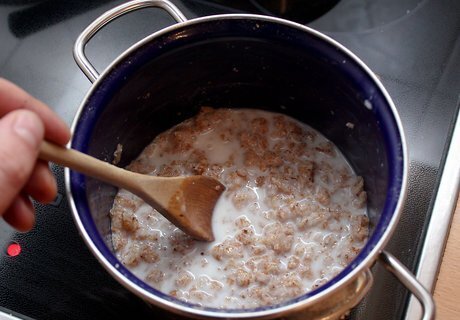
Combine the cooked barley and the rest of the ingredients in a medium saucepan over medium heat. 1 cup of milk, 1 tablespoon of brown sugar, ½ teaspoon cinnamon will turn your plain barley into a regular breakfast feast. Modify the sweetness as you see fit, of course. The milk is necessary (the fatter the milk, the creamier the taste), but you can experiment with the brown sugar and cinnamon and explore other things like honey, fruit juice, or yogurt, too.
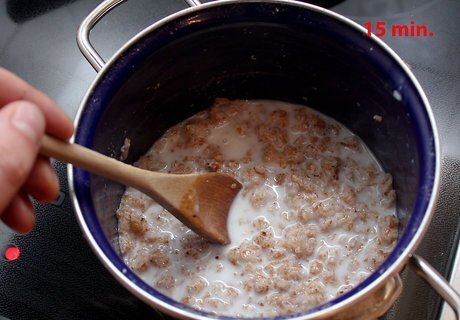
Cook, stirring occasionally, for about 15 more minutes. This is generally how long it takes until the milk has almost been entirely absorbed. What's more, the barley will take on some of the sweet, cinnamon-y flavor. When it has a thick, glutinous, porridge-like consistency, it's done! You can add more milk if you'd like it a little thinner.
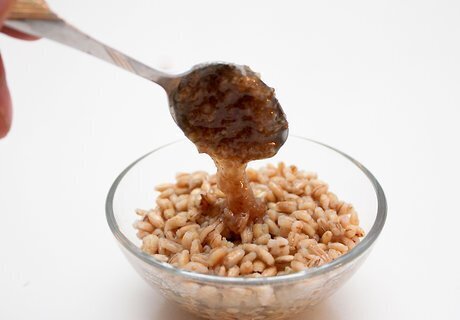
Divide the porridge between four bowls. Right now you just have basic barley porridge. To spice things up, top each dish with walnuts, a drizzle of heavy cream, and fruit, if desired. There’s no getting tired of that! If you're the curious type, try yogurt, peanut butter, cocoa, honey, or any other addition that you think would make the porridge a breakfast of champions.
Simple Porridge with Bananas and Nuts
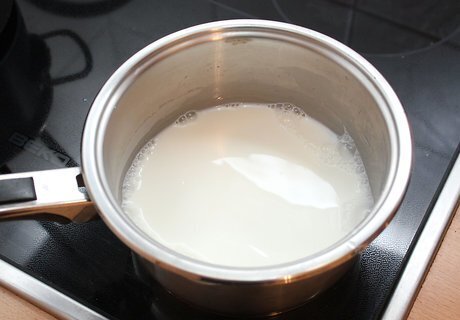
Put skimmed milk on to boil in a pan.
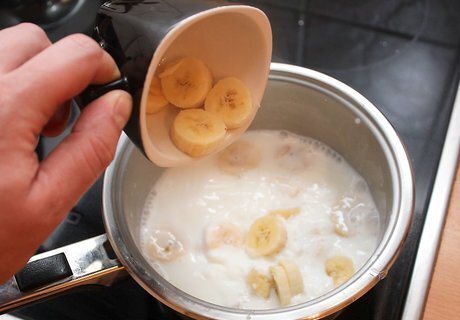
Add two bananas (reasonably ripe).
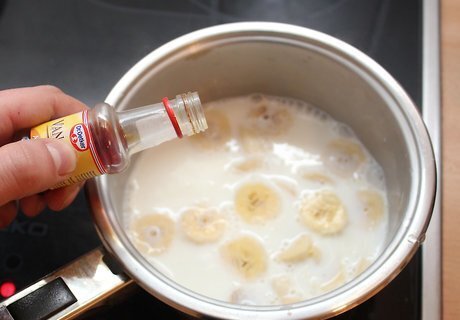
Add a touch of vanilla essences, nutmeg and cinnamon (or other spices that you like).

Add cheap porridge.
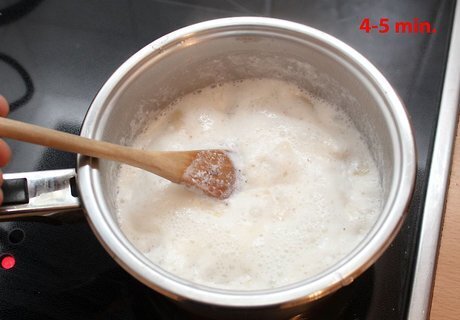
Keep stirring for 4-5 minutes whilst it simmers.
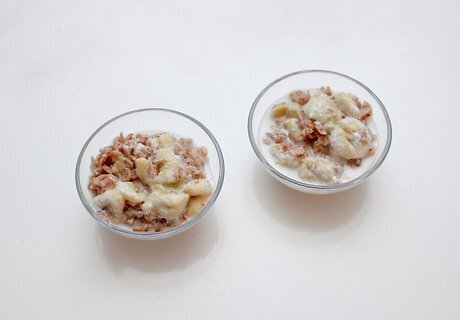
Put in two bowls.
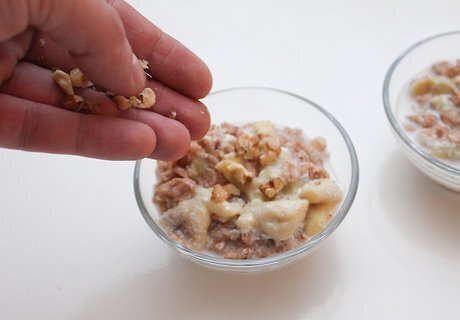
Add a mix of your favourite nuts and seeds on top with a little extra milk. Try cashews, sunflower seeds, hemp seeds, linseed, pumpkins all of which you can roast in the oven, when the oven is in use for something else.
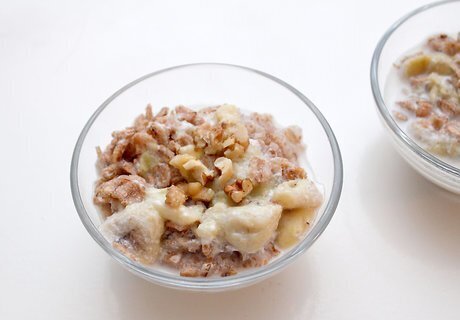
Finished.



















Comments
0 comment